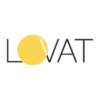EPR reporting services are becoming essential for businesses aiming to achieve full compliance in the EU and UK. Modern regulatory frameworks demand accurate data submission, proper waste management accountability, and seamless integration between internal processes and national extended producer responsibility program requirements. This article provides an in‑depth overview of reporting services, tools, and compliance strategies, ensuring that companies understand the landscape and avoid penalties while achieving efficiency.
Understanding EPR Reporting Services for Compliance in the EU and UK
EPR reporting services are crucial for companies that place products, packaging, or electrical equipment on EU or UK markets. Each business must meet EPR reporting requirements to maintain regulatory alignment and avoid disruptions in supply chains. An EPR reporting workflow includes data collection, calculation of environmental contributions, preparation of documents, and submission to national authorities.

Key Components of an EPR Report
An EPR report aggregates data on product categories, material weights, recycling obligations, and financial contributions. Supported by reporting services, companies achieve precise calculations and timely submissions. Every paragraph uses an element from EPR reporting to explain how producers remain compliant.
What an EPR Compliance Assessment Report Includes
An epr compliance assessment report evaluates a company’s readiness to meet environmental responsibilities. It identifies data gaps, checks alignment with country rules, and improves internal processes for smoother annual filings. This assessment ensures accurate EPR reporting while reducing compliance risks.
Extended Producer Responsibility Program Obligations in Europe

Each extended producer responsibility program establishes obligations for recycling, labeling, waste collection, and eco‑design. These programs rely heavily on structured EPR reporting to verify that producers fully meet market‑specific duties.
EPR Registration and Reporting Steps
Businesses complete epr registration and reporting by identifying product groups, choosing accredited producer responsibility organizations, collecting packaging data, and generating compliance documentation. Proper workflows ensure efficient EPR reporting and ongoing conformity.
Why Companies Use EPR Reporting Software
Modern EPR reporting software automates calculations, tracks materials, and prepares documentation. By connecting multiple data sources, it supports companies of all sizes and enhances compliance accuracy.
Comparative Table: Manual vs Automated EPR Reporting
| Parameter | Manual | Automated |
|---|---|---|
| Error risk | High | Low |
| Time required | Long | Short |
| Scalability | Limited | Full |
Regulatory Compliance Software for Environmental Obligations
Regulatory compliance software integrates with ERP systems and enhances EPR reporting functions. This type of software enables easier monitoring of obligations, transparent audits, and reduced administrative workloads.
Reporting Services That Improve Compliance Accuracy
Professional reporting services offer expert guidance, periodic audits, and real‑time data validation. Each service report clarifies discrepancies and aligns information with national requirements, ultimately supporting stronger EPR reporting.
EPR Support for Businesses Entering New Markets
EPR support includes registration assistance, document preparation, waste‑fee calculation, and updates on regulatory changes. These services reinforce proper EPR reporting in every region where the company operates.
Comparative Table: Basic vs Advanced EPR Support
| Feature | Basic Support | Advanced Support |
|---|---|---|
| Registration help | Yes | Yes |
| Data checks | Limited | Full |
| Ongoing monitoring | No | Yes |
Understanding EPR Reporting Requirements in the EU and UK
EPR reporting requirements differ across jurisdictions. Producers must track packaging composition, electronic devices, textiles, and batteries. Every region defines separate deadlines, formats, and documentation structures supporting accurate EPR reporting.
ERP System Integration for EPR Processes
Integrating ERP system tools with compliance modules ensures accurate data flows. It reduces errors and accelerates the company’s EPR reporting tasks. Integration helps teams maintain consistency in financial, operational, and sustainability metrics.
Comparative Table: ERP System Options
| System | Strength | Use Case |
|---|---|---|
| Small ERP | Fast setup | Small firms |
| Enterprise ERP | Full customization | Large groups |
Best ERP for Small Business in Compliance Context
The best erp for small business includes strong inventory tools, easy configuration, and compatibility with EPR reporting software. This ensures proper alignment between product data and compliance obligations.
ERP Solutions for Efficient Environmental Reporting
Modern erp solutions deliver automation, process visibility, and integrations for regulatory filing. These tools strengthen the reliability of EPR reporting and reduce manual effort.
Choosing the Best ERP Software for Compliance Tasks
The best erp software supports data classification, analysis, and automatic generation of compliance files. It ensures that companies maintain high reporting accuracy while simplifying EPR reporting needs.








